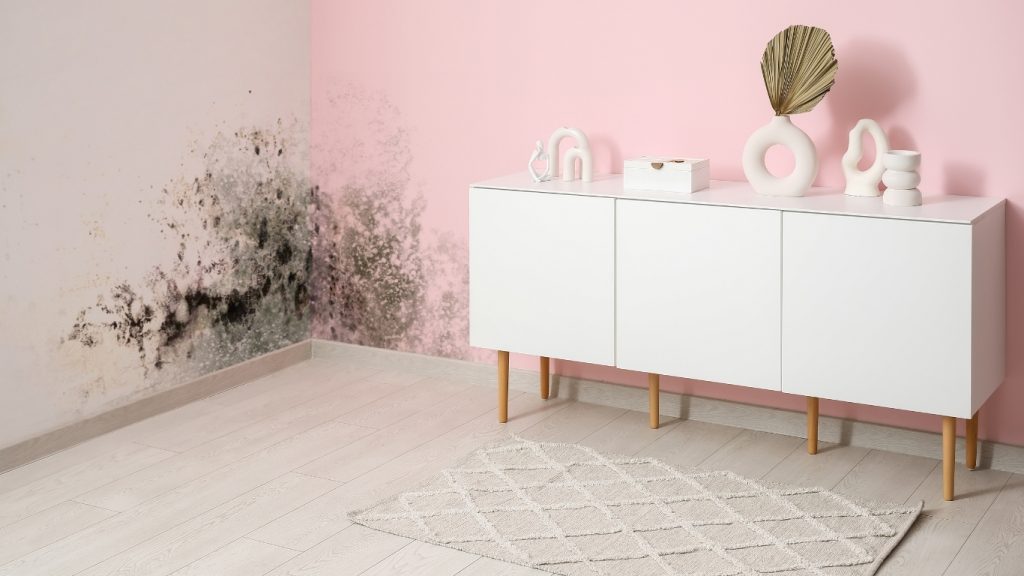Mold isn’t just an eyesore; it’s a silent threat, especially for homes with allergy-prone occupants. In 2025, safe DIY mold remediation isn’t just about cleaning up the problem—it’s about taking a proactive approach to protect health and create a mold-free sanctuary. Let’s dive into the strategies, tools, and tips to tackle mold safely and effectively.
Why Mold is a Serious Problem for Allergy Sufferers
Mold might seem harmless at first glance, but for allergy sufferers, mold damage causes serious health hazards. Mold produces tiny spores that float through the air, often unnoticed. When inhaled or touched, these spores can trigger a variety of allergic reactions, ranging from mild discomfort to severe respiratory distress.
Common Allergy Symptoms Triggered by Mold
- Sneezing and Runny Nose: Constant sneezing and nasal congestion are common signs of mold exposure.
- Watery, Itchy Eyes: Mold spores irritate sensitive membranes in the eyes, causing discomfort.
- Coughing and Wheezing: For some, mold can exacerbate asthma symptoms or cause breathing difficulties.
- Skin Rashes: Direct contact with mold can lead to itchy, irritated skin.
Spotting the Silent Culprit: Early Signs of Mold
Before diving into DIY mold remediation, it’s crucial to identify the problem. If left unchecked, mold can spread extensively, increasing the overall mold remediation cost. Here’s how:
- Persistent Musty Odors: If your home has a lingering earthy or musty smell, it might be mold. Even if you can’t see it, mold could be growing behind walls, under carpets, or in other hidden areas.
- Visible Discoloration: Mold often appears as black, green, or white spots on walls, ceilings, or floors. Watch for bubbling paint or wallpaper—these are signs of hidden moisture inviting mold growth.
- Damp or Humid Areas: High-humidity spots like basements, bathrooms, and laundry rooms are mold hotspots. Regularly check these areas for signs of moisture or musty smells.

Pro Tip: Don’t ignore hidden spaces like HVAC systems, crawlspaces, or under carpets. Mold loves these out-of-sight areas, so use a flashlight or moisture meter to uncover its lurking presence.
Proactive Mold Prevention: Your First Line of Defense
Investing in preventive measures like dehumidifiers, proper ventilation, and regular inspections can significantly reduce the chances of mold growth. These efforts not only ensure a healthier home but also minimize the potential mold remediation cost by preventing expensive repairs later.
1. Control Moisture Levels
- Fix leaks promptly.
- Use dehumidifiers to maintain humidity below 50%.
- Ensure proper drainage around your home’s foundation.
2. Enhance Ventilation
- Use exhaust fans in bathrooms and kitchens.
- Open windows to improve airflow in living spaces.
- Invest in an air purifier with a HEPA filter.
3. Stay Vigilant
- Inspect your home regularly for water damage.
- Address condensation on windows and pipes immediately.
- Avoid carpeting in high-moisture areas.

Safe DIY Mold Remediation: Protecting Allergic Occupants
When mold takes hold, safe DIY mold remediation is key—especially for homes with allergy sufferers. Here’s how to do it right:
Assess the Situation
Not all mold problems are the same. For small areas, DIY mold remediation using natural cleaners like vinegar may work. But if the infestation is extensive, hidden, or recurring, it’s best to call in professional mold mitigation experts.
Allergy-Safe Cleanup Practices
To protect allergic individuals during mold cleanup, it’s essential to follow safe cleaning protocols. Isolate the affected area using plastic sheeting to prevent spores from spreading to other parts of the home. Additionally, ensure proper ventilation by using fans or opening windows to improve airflow and direct spores outside.
Opt for Non-Toxic Mold Cleaners
For homes with allergic occupants, avoid harsh chemicals that can irritate sensitive systems. Use eco-friendly options like baking soda, hydrogen peroxide, or plant-based mold cleaners.
Replace Contaminated Materials
In some cases, cleaning isn’t enough, and contaminated materials like carpets, drywall, and furniture must be replaced. This step can add to the overall mold remediation cost, which is why addressing mold issues early is crucial to keeping costs manageable.

Healthier Homes, Happier Lives
Mold mitigation isn’t just about cleaning—it’s about creating a healthier environment for you and your loved ones. With the right strategies and tools, you can prevent mold, protect allergic occupants, and enjoy peace of mind in 2025.
Take charge of your home today with a proactive approach to DIY mold remediation. A safe, mold-free environment is essential for a happy, healthy life. However, if you’re dealing with a large infestation or a persistent mold problem, don’t hesitate to seek expert help. Contact PuroClean of McLean—your trusted partner for professional mold cleanup. Let us provide tailored solutions to create a healthier, safer home for you and your loved ones.
FAQs About Mold Remediation
Q: Can mold really trigger severe allergies?
A: Yes! Mold spores are a leading cause of respiratory issues and allergic reactions in sensitive individuals.
Q: What’s the cost of professional mold remediation?
A: The professional mold remediation cost depends on several factors, including the size of the affected area, the extent of the infestation, the type of mold, and the materials involved.
Q: Is DIY mold remediation safe?
A: DIY mold remediation can be safe for small, surface-level mold problems, especially if the affected area is less than 10 square feet. However, if the mold issue is recurring or covers a larger area, it’s best to consult a professional.




 PuroClean of McLean and West Falls Church
PuroClean of McLean and West Falls Church